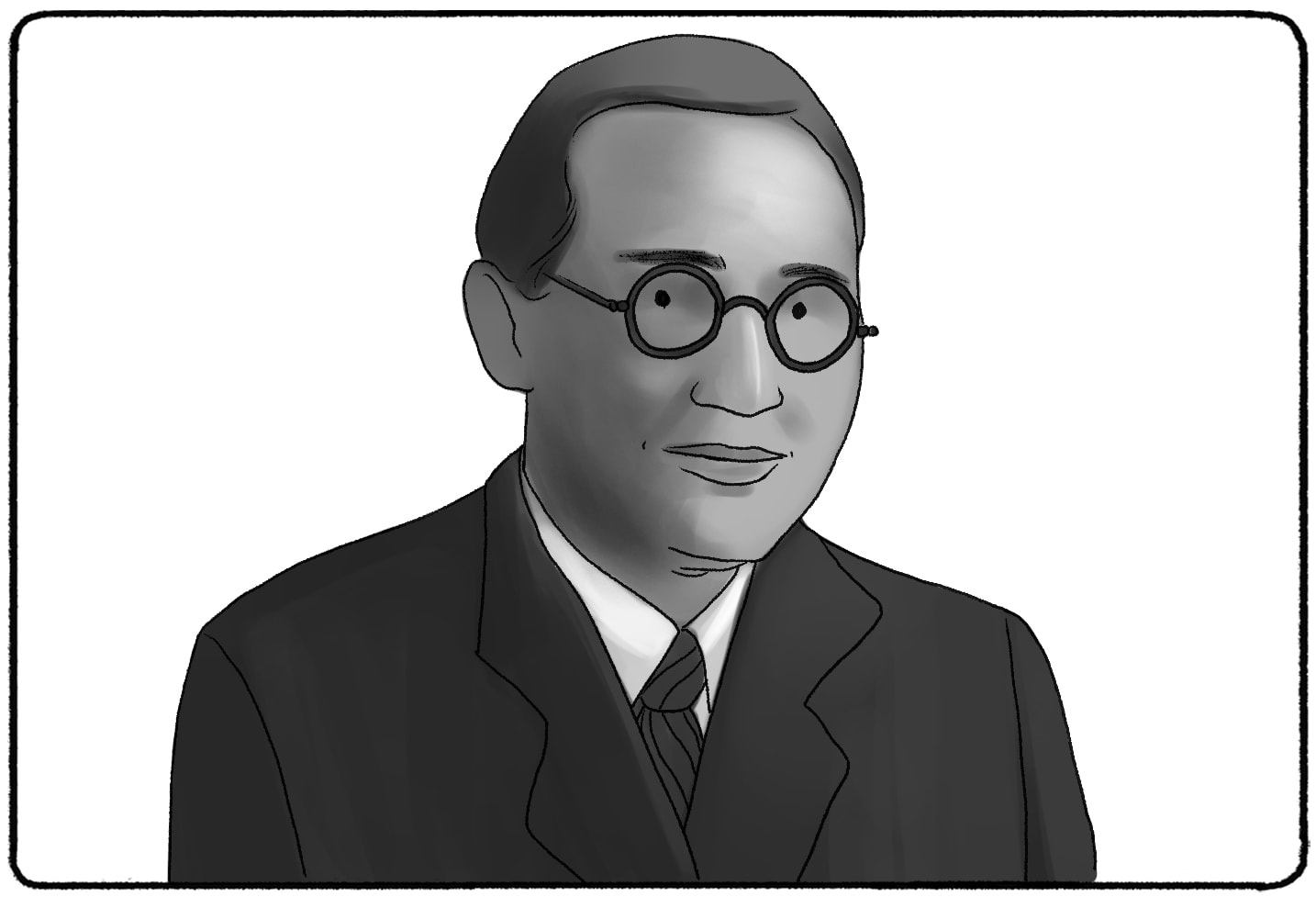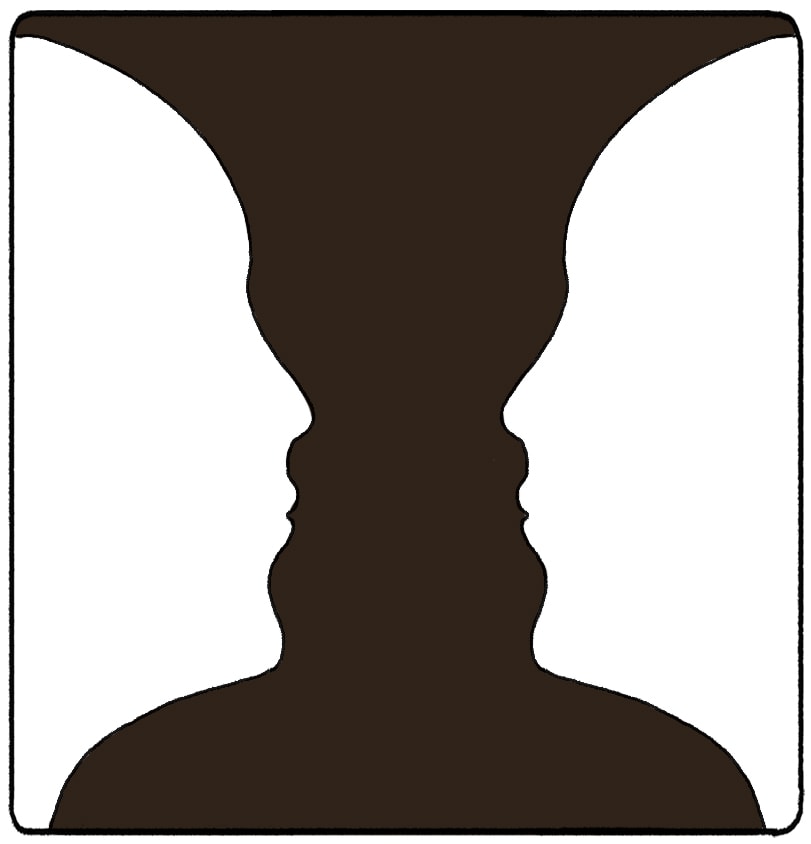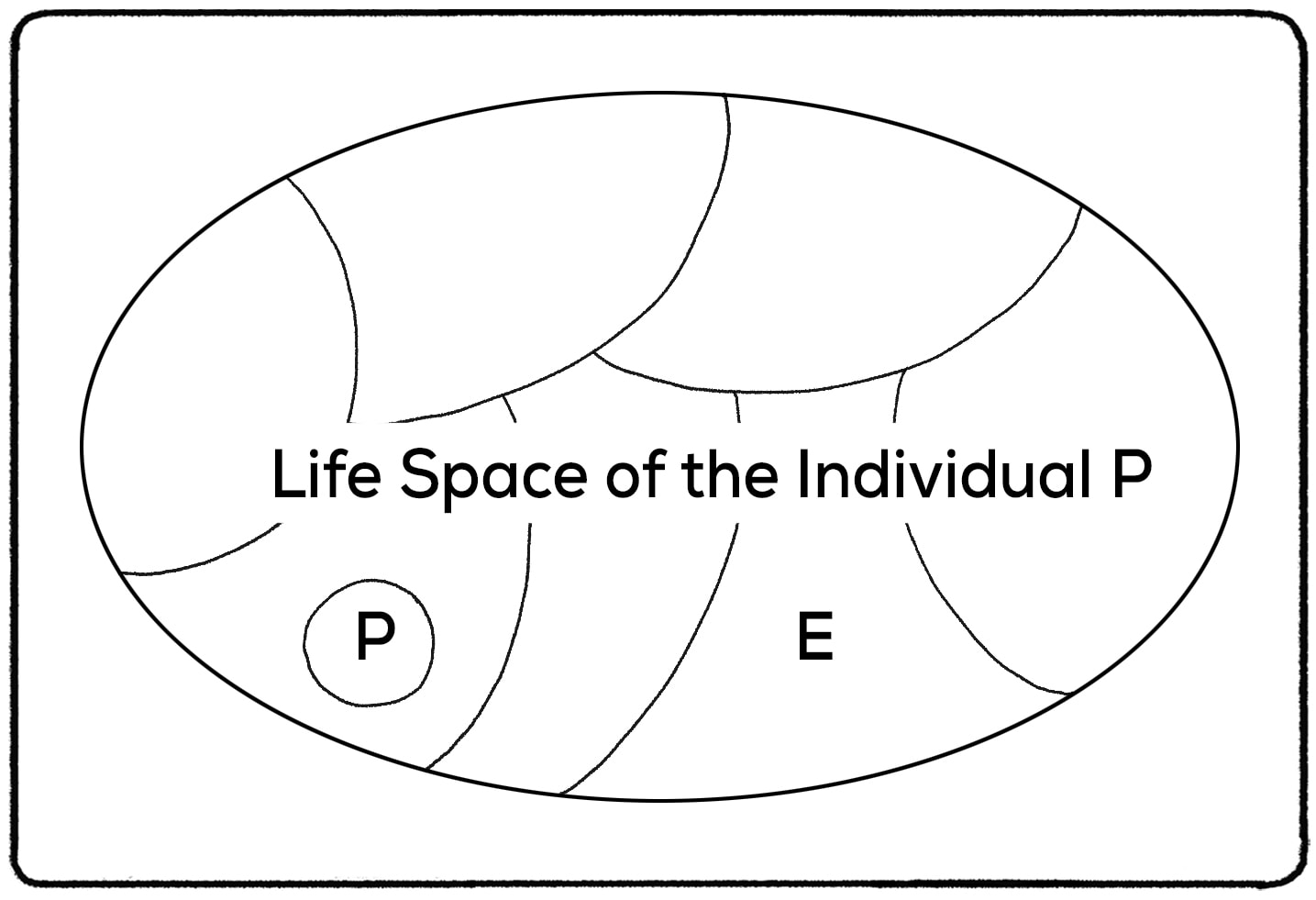In Chuck Palahniuk’s Invisible Monsters, he writes, “Nothing of me is original. I am the combined effort of everyone I've ever known.” This sentiment will sound familiar as you learn about Lewin's Field Theory.
You might be familiar with the idea that our behaviors are influenced by our surroundings, right? Well, imagine diving deeper into this concept, where every decision you make is like a chess move on a dynamic board. This is where Lewin's Field Theory comes into play. Developed by Kurt Lewin, a renowned psychologist, this theory suggests that our behaviors aren't random or solely based on our personalities. Instead, they result from a complex interplay between us and our environment.
What Is Lewin's Field Theory?
Invisible Monsters was not about Kurt Lewin or psychological theories, but this quote certainly speaks to what we will discuss today. Although, if it were up to Lewin, this quote would be altered slightly.
Lewin’s Field Theory suggests that you are a combination of everything you’ve ever known. The theory posits that human behavior results from the interplay between the individual and their environment.
Here's a more detailed breakdown:
- Life Space: At the core of Lewin's Field Theory is "life space." This represents all the factors influencing a person's behavior at any moment. It includes the person's past experiences, current perceptions, goals, and external environmental factors.
- Forces: Within the life space, there are various forces at play. Some forces push the individual towards a particular behavior, while others might pull them away. These forces can be internal (like desires or fears) or external (like peer pressure or societal norms).
- Equilibrium: Behavior, according to Lewin, seeks equilibrium. When the forces pushing and pulling an individual are balanced, the person's behavior remains stable. However, when there's an imbalance, the individual will act to restore equilibrium. This can be likened to a ball on a landscape of hills and valleys, where the ball (individual) will move until it finds a resting place (equilibrium).
- Change: For behavior to change, the forces in the life space must be altered. This can be achieved by either strengthening the driving forces, weakening the restraining forces, or combining both.
- Field Theory in Practice: Lewin believed that to understand and predict behavior, one must consider the totality of the life space and not just isolated factors. This holistic approach was revolutionary at the time and has since influenced various areas of psychology, especially in understanding group dynamics and organizational change.
In essence, Lewin's Field Theory offers a comprehensive lens to view behavior as a dynamic interplay between an individual and their environment, emphasizing the importance of context in shaping our actions.
There are many "field theories" out there. Lewin's Field Theory exists within the world of physics. It has nothing to do with quantum field theory or crystal field theory. Einstein's Unified Field Theory may be similar to Lewin's Field Theory, suggesting that "everything" is connected. Still, most field theories exist within physics, not psychology.
If you are interested in learning about social psychology, read on!
About Kurt Lewin

Kurt Lewin was a psychologist born in Poland in the late 1800s. He studied psychology in Germany and later emigrated to America. Working closely with Gestalt psychologists, he developed Field Theory and other ideas on change, education, and learning. Throughout his career, Lewin had a mission to use psychology to understand and overcome prejudice. His work set the foundations for “sensitivity training.” Lewin also mentored Leon Festinger, who went on to develop Cognitive Dissonance Theory and Social Comparison Theory.
Lewin was also known for his work connecting the worlds of psychology, mathematics, and topography. Field Theory is also known as “Topological and Vector Psychology.”
Influence Of Gestalt Theory
Lewin used concepts from Gestalt psychology to create Field Theory. Gestalt psychology was developed in the early 19th century and introduced new ideas about perception. At the time, structuralism was the dominant school in psychology. Structuralism attempted to break down the adult mind into each of its parts and analyze how these parts fit together.

However, Gestalt psychologists were less interested in the individual “parts.” Gestalt Theory suggested that people perceived the “whole” over the individual parts. Today, Gestalt principles are still studied by designers, visual artists, and software developers who want to create a product or interface that is easy to understand.
Field Theory Concepts and Examples
Gestalt Theory can be summed up by saying, "The whole is more than the sum of its parts." Field Theory attempts to define this “whole” and apply these principles to a person or situation. It suggests patterns should be studied between the individual and the field in which they exist.
Field
Lewin also took inspiration from mathematics and physics to “map out” an individual’s field. (The field is also known as the environment.) Within an individual’s environment are all factors that may influence a person’s decisions or behaviors.
Examples of these factors include:
- Experience the individual has endured
- Media consumed
- People and ideas that the individual has come into contact with
- Understanding of social norms and rules
These fields may be similar from person to person, but no two fields will look the same. Each environment is ultimately different, as it comprises all of an individual’s experiences and feelings, many of which are unique to them.
Lewin believed that to analyze a person or a situation, the whole environment must be considered. Each experience must be considered important, even those that may not seem relevant or significant. This means that a comment made by a passerby or a childhood birthday party may still contribute to an individual’s overall environment and behavior.
Life-Space
Lewin’s look at behavior varied from that of the behaviorists. He believed behavior was a function of a person’s “life-space,” demonstrated by the equation B = f (LS). The life space accounts for all factors that influence a person’s decisions, including their perceptions of their experiences. These perceptions and interpretations will vary from person to person, as will the experiences they perceive and interpret.

B = f (P, E)
Let’s break the equation down further. Lewin believed that the person and their environment ultimately determined the individual’s behavior, or B= f(LS) = F(P,E). I discussed the environment earlier in the video, but what exactly is the “person?”
Lewin used ideas from Gestalt Theory to define this term.
Examples of factors that make up the “person” include:
- The values or beliefs held by the individual
- Their perceptions and feelings toward certain experiences
- Abilities and skills
- Other characteristics and properties of the individual
- Motivations that move an individual toward one goal or another (also known as “vectors”)
The life space is dynamic. Every day comes with new experiences. As individuals develop, learn, and change, their “person” will change and mold their life space.
The interaction between the person and what they’ve experienced will ultimately determine their behavior.
Life-Space in Kurt Lewin's Words
Here's what Kurt Lewin had to say about the life-space in his book Field Theory as a Social Science:
"The life space… includes both the person and his psychological environment. The task of explaining behavior then becomes identical with (1) finding a scientific representation of the life space (LSp) and (2) determining the function (F) which links the behavior to the life space. This function (F) is what one usually calls a law… The novelist who tells the story behind the behavior and development of an individual gives us detailed data about his parents, his siblings, his character, his intelligence, his occupation, his friends, his status. He gives us these data in their specific interrelation, that is, as part of a total situation. Psychology has to fulfill the same task with scientific instead of poetic means….
The method should be analytical in that the different factors which influence behavior have to be specifically distinguished. In science, these data have also to be represented in their particular setting within the specific situation. A totality of coexisting facts which are conceived of as mutually interdependent is called a field. Psychology has to view the life space, including the person and his environment, as one field.“
Goals, Barriers, Conflicts
According to Lewin, an individual’s environment is not just a collection of experiences. Maps of a person’s environment may also include their goals and any barriers preventing them from reaching them. These goals may include things that the individual wants to achieve (positive valence) or goals that include things that the individual is trying to avoid (negative valence.)
Until that goal is achieved, the individual may feel tension. Until the goal is reached and the attraction to that goal is satisfied, that tension will still exist. Lewin believed that this tension was especially memorable. For example, an unfinished task surrounded by tension is more likely to stick out in someone’s mind than a finished task without any tension.
As people overcome certain barriers or conflicts, their life-space will continue to mold and change.
Kurt Lewin's Other Contributions to Social Psychology
Until Field Theory, psychologists focused more on an individual’s behavior and how it could be understood or altered. Lewin was one of the first psychologists to examine how individuals interacted with their environments and each other. For this reason, he is considered the “father” of social psychology.
Throughout his development of Field Theory and other ideas, Lewin brought ideas from mathematics and science into psychology. He was one of the first psychologists to pull ideas from the scientific method and apply them to social psychology. Rather than observing individuals and their interactions, he controlled elements of the environment and pioneered the way that psychologists conducted experiments.
Lewin’s contributions to the world of psychology are numerous. Without his work and the ideas within Field Theory, the world of social psychology would probably look drastically different.
Change Theory vs. Field Theory
Kurt Lewin's Field Theory is arguably his most well-known contribution to social psychology, but he also developed Change Theory. Kurt Lewin's Change Theory is quite different from field theory in that it tries to explain how we can reject and replace the information that we have learned. Lewin developed an unfreeze-change-refreeze model that instructs individuals and teams on changing their thinking and behavior. You can learn more about this theory here!
Kurt Lewin Quotes From Field Theory in Social Science
Interested in reading more about field theory? Borrow Field Theory in Social Science from your local library. Here are some notable quotes from the book:
On Proposing a New Theory
- "The history of acceptance of new theories frequently shows the following steps: At first the new idea is treated as pure nonsense, not worth looking at. Then comes a time when a multitude of contradictory objections are raised, such as: the new theory is too fancy, or merely a new terminology; it is not fruitful, or simply wrong. Finally a state is reached when everyone seems to claim that he had always followed this theory. This usually marks the last state before general acceptance."
- "There is nothing so practical as a good theory."
On the Impact of the Past
- "It has been frequently misunderstood and interpreted to mean that field theorists are not interested in historical problems or in the effect of previous experience. Nothing can be more mistaken. In fact, field theorists are most interested in development and historical problems and have certainly done their share to enlarge the temporal scope of the psychological experiment from that of the classic reaction time experiment, which lasts only a few seconds, to experimental situations, which contain a systematically created history throughout hours or weeks."
On Learning
- "Learning is more effective when it is an active rather than a passive process."
On Culture
- "One should view the present situation – the status quo – as being maintained by certain conditions or forces. A culture – for instance, the food habits of a certain group at a given time – is not a static affair but a live process like a river which moves but still keeps to a recognizable form...Food habits do not occur in empty space. They are part and parcel of the daily rhythm of being awake and asleep; of being alone and in a group; of earning a living and playing; of being a member of a town, a family, a social class, a religious group . . . in a district with good groceries and restaurants or in an area of poor and irregular food supply. Somehow all these factors affect food habits at any given time. They determine the food habits of a group every day anew just as the amount of water supply and the nature of the river bed determine the flow of the river, its constancy or change."



